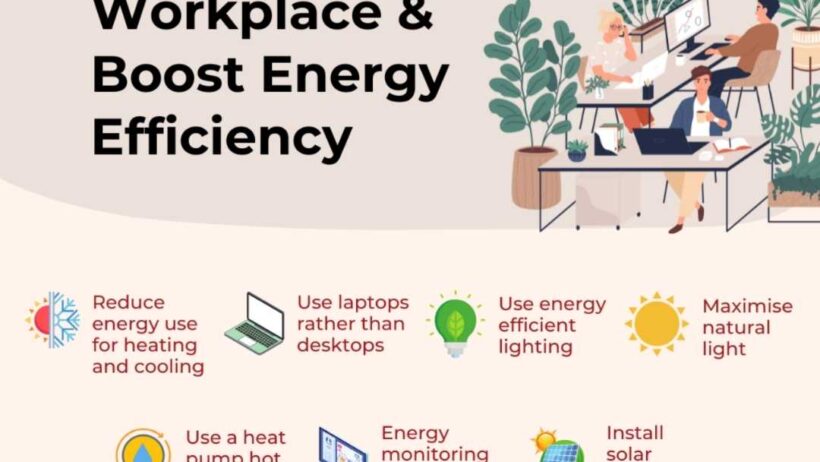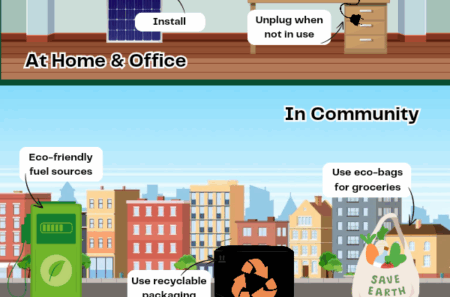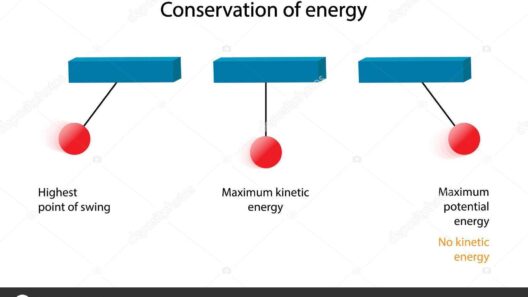In the realm of corporate dynamics, where profits often overshadow principles, energy conservation emerges as a vital sentinel of sustainability. Embracing energy efficiency within the workplace is akin to cultivating a garden—instead of mere financial gains, the seeds of a greener future sprout, yielding benefits that transcend mere cost-saving. Companies can invigorate their operations, foster a culture of responsibility, and contribute positively to the planet. This narrative unfolds through several poignant strategies aimed at achieving an oasis of efficiency while minimizing costs.
First and foremost, creating an energy-conscious workplace begins with a comprehensive audit of current energy consumption. Much like a skilled surgeon assessing a patient’s health, identifying inefficiencies allows for targeted interventions. This diagnostic phase can reveal alarming truths about energy use—whether it’s outdated appliances valiantly clinging to life or unnecessary energy drains masquerading as customary practices. By scrutinizing these patterns, businesses gain vital insights that pave the path toward significant reductions.
Once vulnerabilities have been highlighted, the metamorphosis can commence. Transitioning to energy-efficient lighting represents a fundamental leap forward. Traditional incandescent bulbs, akin to relics of a bygone era, consume excessive electricity and emit heat wastfully. In contrast, LED lighting serves as a beacon of hope; it uses a fraction of the energy and boasts a significantly longer lifespan. Imagine bathed in soft, ambient light that simultaneously diminishes energy bills—a dual victory for aesthetics and efficiency.
Integrating smart technology into the workplace is another transformative endeavor. Consider the installation of programmable thermostats, which operate much like an adept conductor orchestrating a finely tuned symphony. By automatically adjusting temperatures based on occupancy and time of day, these devices ensure that energy is not squandered on empty spaces. The nuance of comfort and control is delicately balanced, creating an environment conducive to productivity.
Moreover, embracing natural light can significantly enhance energy conservation. The sun’s rays, much like a potent elixir, have the extraordinary potential to reduce reliance on artificial lighting. Designing workspaces with large windows or skylights invites daylight to infuse the atmosphere, not only illuminating the surroundings but also boosting employee morale. Scientific studies substantiate that exposure to natural light enhances cognitive function and overall well-being. In this way, harnessing nature’s gift becomes an investment in both environmental stewardship and human capital.
As the atmosphere blanketed by traditional office structures can stifle creativity, incorporating biophilic design becomes a compelling strategy. This approach seeks to reconnect employees with the natural world, embedding greenery within the workspace. The presence of plants nurtures not only the air quality but also stimulates mental acuity. The corners of offices transformed into lush refuges become sanctuaries of rejuvenation. Plants, much like diligent workers themselves, contribute to a greener, more vibrant ecosystem.
Furthermore, operational procedures should be reassessed through a lens of efficiency and sustainability. Telecommuting policies can serve as a robust solution. When employees work from home, energy consumption in the office dwindles, freeing up resources while offering personnel greater flexibility. This approach minimizes the carbon footprint while promoting a healthier work-life balance—a win-win for all stakeholders involved. Nevertheless, it demands clear communication and the establishment of a culture that thrives on accountability and teamwork, even from afar.
Engagement among employees is paramount in fostering an energy-efficient culture. Initiating energy awareness campaigns can serve to instruct and inspire. Workshops, informational sessions, or simple signage can raise consciousness about daily energy-saving practices. Highlighting small victories—like turning off lights and unplugging devices—creates an atmosphere of collective responsibility, promoting a shift in perspectives regarding energy use. It is not merely about the individual actions but rather the collective effort, like a symphony of diverse instruments contributing to a harmonized performance.
Adopting energy-efficient appliances may also prove beneficial in the grand scheme of conservation. Operations dependent on outdated equipment drain resources and escalate costs, akin to a leaky vessel at sea. The upfront investment may seem daunting, yet the long-term savings render it a prudent decision. Energy Star-rated appliances, for example, are engineered to utilize energy judiciously. This sustainable choice equates to lower utility bills and a commendable reduction in the carbon footprint.
Incentivizing energy-efficient behaviors can further solidify this ethos. Committing to performance-based rewards, such as bonuses for teams demonstrating effective energy-saving initiatives, fosters competitive spirit. Employees feel appreciated and empowered, thereby propelling them toward innovative solutions. This cycle of recognition and motivation transforms energy conservation from a mere task into a celebrated corporate value.
Finally, continuous evaluation and adaptation are essential for sustaining progress. Just as the tides ebb and flow, so too must strategies evolve. Establishing energy benchmarks and monitoring consumption regularly will help identify trends and areas for improvement. This feedback loop allows for timely adjustments, ensuring that the organization remains agile in fostering an eco-friendly, cost-effective workplace.
In summation, conserving energy at the workplace is not merely a mandate; it is an ethos that individuals and organizations must wholeheartedly embrace. By adopting a myriad of strategies—from upgrading infrastructure to nurturing an informed and engaged workforce—businesses can cultivate an environment where energy efficiency thrives. This journey toward sustainability will not only bolster bottom lines but will also exemplify a commitment to the planet and future generations. An energy-efficient workplace becomes a beacon—illuminating sustainable practices and casting a hopeful glow on the path forward.








